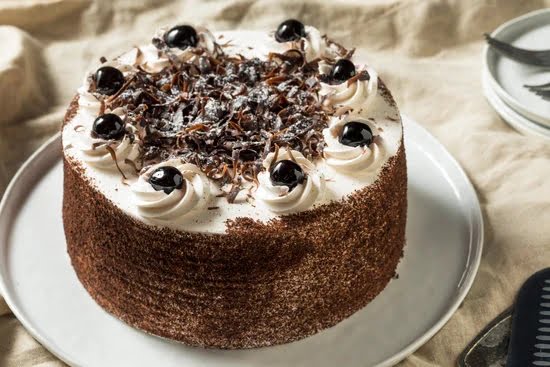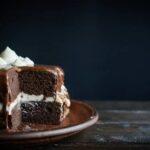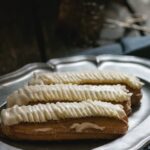Decorating a cake can be a time-consuming and labor-intensive process, so it’s important to ensure that your hard work is preserved. In this article, we will discuss the importance of freezing a decorated cake and the benefits of doing so. Whether you’re a professional baker preparing for an event or simply someone who wants to have a delicious cake on hand at all times, knowing how to properly freeze a decorated cake is essential.
Freezing a decorated cake not only extends its shelf life but also allows you to prepare in advance for special occasions. This means you can have a beautifully decorated cake ready to go at a moment’s notice, without the added stress of last-minute baking and decorating. Additionally, freezing a cake can help maintain its freshness and flavor, ensuring that it tastes just as delicious when it’s thawed as it did when it was first made.
Throughout this article, we will provide tips and techniques for choosing the right cake to freeze, properly decorating and preparing the cake for freezing, the best methods for freezing the cake, and how to safely thaw a frozen decorated cake without compromising its quality. We will also discuss post-freezing touch-ups and additional tips and tricks for preserving decorated cakes. By following these guidelines, you can confidently freeze your decorated cakes and enjoy them whenever you please.
Choosing the Right Cake
When it comes to freezing a decorated cake, choosing the right type of cake is essential to ensure that it maintains its flavor and texture after being thawed. Not all cakes are suited for freezing, so it’s important to consider certain factors when selecting a cake for this purpose.
First and foremost, it’s best to choose a cake with a sturdy and firm texture, such as pound cake, sponge cake, or carrot cake. These types of cakes tend to freeze well and maintain their structure and moisture content when thawed. Avoid delicate or light-textured cakes like angel food cake or chiffon cake, as they may become dense or dry after being frozen.
Another important aspect to consider is the ingredients used in the cake. Cakes that contain fillings or frostings with high-fat content (such as buttercream) tend to freeze better compared to those with whipped cream or custard fillings, which may separate or become watery when thawed.
In addition, it’s advisable to select a cake that is not overly sweet, as freezing can sometimes intensify sweetness. Opt for a moderately sweetened cake that can withstand the freezing process without becoming overpoweringly sweet once thawed.
To ensure that the chosen cake will freeze well and maintain its flavor and texture, it’s recommended to test a small portion of the cake by freezing it for 24 hours and then thawing it to see how it holds up. This way, you can assess whether the selected cake is suitable for freezing before committing to the entire dessert.
| Aspect | Action |
|---|---|
| Texture | Choose a sturdy and firm textured cake such as pound cake or sponge cake |
| Ingredients | Select cakes with frostings containing high-fat content for better freezing results |
| Sweetness Level | Opt for moderately sweetened cakes to avoid intensification of sweetness during freezing |
| Testing | Conduct a small-scale freeze-thaw test before committing to freezing the entire decorated cake. |
Decorating Techniques
Decorating a cake is a fun and creative process that allows you to customize your cake for any occasion. From buttercream flowers to fondant sculptures, there are countless ways to adorn a cake. However, not all decorations freeze well, and it’s important to consider the type of decoration when freezing a decorated cake.
Buttercream Decorations
Buttercream is a popular choice for decorating cakes due to its smooth texture and ability to hold intricate designs. When freezing a cake with buttercream decorations, it’s crucial to ensure that the frosting has completely set before wrapping the cake for freezing. To prevent smudging or sticking, place the cake in the freezer for 1-2 hours until the buttercream is firm, then carefully wrap it in plastic wrap or parchment paper.
Fondant Decorations
Fondant is a versatile option for creating detailed and elaborate decorations on cakes. When freezing a decorated cake with fondant accents or figurines, it’s important to handle them with care. Before freezing the cake, allow the fondant decorations to air dry and harden at room temperature for at least 24 hours. Once they are firm, gently place them on the cake and proceed with wrapping and freezing as usual.
Edible Image Decorations
Edible images are a convenient way to add personalized designs and photos to a cake. When freezing a decorated cake with edible image decorations, take extra precautions to prevent any damage to the images. To safeguard the edible images from moisture and condensation during freezing, consider placing a protective layer of clear acetate over them before wrapping the entire cake.
By considering these different types of decorations and following these tips for ensuring they freeze properly, you can preserve the beauty and integrity of your decorated cake even after it has been frozen. Understanding how different decorations behave during freezing will help you maintain the visual appeal of your cake when it is thawed and ready to be served.
Preparing the Cake for Freezing
Once you have chosen the right cake and finished decorating it, the next step is preparing it for freezing. Properly wrapping and preparing the cake for freezing is crucial to maintaining its flavor, texture, and overall quality. When done correctly, freezing a decorated cake can preserve it for future use without compromising its taste or appearance.
To prepare the cake for freezing, start by allowing the icing or frosting to set completely. This will help prevent any smudging or damage to the decorations during the wrapping process. Once the icing is set, carefully cover the cake in a layer of plastic wrap. Be gentle to avoid damaging any delicate decorations or designs on top of the cake.
Next, add an outer layer of aluminum foil over the plastic wrap to provide an extra barrier against freezer burn and moisture. Make sure that both layers are tightly sealed around the cake to prevent air from entering. Alternatively, if your cake is small enough and you have space in your freezer, you can place it in an airtight container instead of using plastic wrap and foil.
Following these steps will ensure that your decorated cake is properly protected during freezing. It will also maintain its freshness and structural integrity when stored in your freezer.
| Cake Preparation Steps | Details |
|---|---|
| Allow Icing/Frosting to Set | This helps prevent smudging or damage during wrapping |
| Wrap with Plastic Wrap | Gently cover with plastic wrap to protect decorations |
| Add Aluminum Foil Layer | To provide extra protection against freezer burn and moisture |
Freezing Process
When it comes to freezing a decorated cake, the process is crucial in ensuring that the cake maintains its flavor, texture, and visual appeal. Properly freezing a decorated cake can extend its shelf life and allow for advanced preparation for special events or gatherings. In this section, we will discuss the best methods for freezing a decorated cake, including the use of airtight containers and wrapping techniques.
One of the most effective ways to freeze a decorated cake is by using an airtight container. Airtight containers help to prevent freezer burn and preserve the freshness of the cake. When choosing an airtight container, opt for one that is large enough to accommodate the size of your cake without causing damage to the decorations. Additionally, ensure that the container is clean and dry before placing the cake inside to prevent any moisture buildup.
In addition to using an airtight container, wrapping the decorated cake properly is essential in maintaining its quality during freezing. Start by placing the cake on a sturdy cardboard base to provide support during wrapping and handling. Next, carefully cover the entire cake with plastic wrap, ensuring that it is tightly sealed to protect against air exposure.
Then, layer aluminum foil over the plastic wrap to provide an extra barrier against freezer odors and frost. This double-layered wrapping technique helps to safeguard both the flavor and appearance of the decorated cake during freezing. Following these methods will help ensure that your decorated cakes retain their quality when frozen for future enjoyment.
Thawing the Cake
Thawing a frozen decorated cake is just as important as the freezing process itself. Improper thawing can lead to a soggy or unevenly defrosted cake, compromising its taste and texture. Here are some tips on how to safely and effectively thaw a frozen decorated cake without compromising its quality:
1. Refrigerator Thawing: One of the safest methods for thawing a frozen decorated cake is to transfer it from the freezer to the refrigerator. This slow and steady method allows the cake to thaw gradually, maintaining its texture and preventing any drastic temperature changes. Simply place the wrapped cake in the refrigerator and allow it to thaw overnight or for at least 6-8 hours.
2. Room Temperature Thawing: If you need to speed up the thawing process, you can also thaw a frozen decorated cake at room temperature. To do this, remove the wrapped cake from the freezer and let it sit at room temperature for 1-2 hours. Keep in mind that this method should only be used if you need to serve the cake relatively quickly, as prolonged exposure to warmer temperatures can compromise its texture.
3. Avoid Microwave Thawing: While it may be tempting to use a microwave to quickly thaw a frozen decorated cake, this method is not recommended. Microwaves can cause uneven heating and potentially melt or damage delicate decorations and frosting.
By following these tips, you can ensure that your frozen decorated cake thaws safely and effectively, preserving its flavor and appearance for when it’s time to enjoy it.
Additional Tips:
– Once the cake is fully thawed, avoid refreezing it as this can further compromise its quality.
– For best results, keep the cake wrapped while it thaws to prevent any condensation from forming on the decorations.
– After thawing, inspect the decorations for any damage or smudging and make any necessary touch-ups before serving.
Post-Freezing Touch-Ups
Decorated cakes are often frozen to preserve their freshness and flavor for special occasions such as weddings, birthdays, or other celebrations. However, the freezing process can sometimes lead to imperfections in the cake’s appearance, such as smudged frosting or decorations. In this section, we will discuss how to fix any imperfections that may occur during the freezing process, ensuring that your cake looks as beautiful as it did before it was frozen.
Fixing Smudged Frosting
If you find that the frosting on your decorated cake has become smudged or blurred during the freezing process, there are a few methods you can use to fix it. One option is to gently blot the smudged areas with a paper towel to absorb any excess moisture.
Then, using a spatula or butter knife, carefully smooth out the frosting to restore its original appearance. If the smudging is more severe, you may need to remove and replace the affected areas of frosting before allowing the cake to thaw completely.
Touching Up Decorations
For cakes adorned with intricate decorations such as fondant accents or piped designs, it is not uncommon for these elements to become slightly misshapen or distorted during freezing. To fix this, carefully reshape any misshapen decorations while the cake is still partially frozen.
Use your fingers or a small tool to gently mold and reshape the decorations back into their original form. If any decorations have become detached from the cake during freezing, you can use a small amount of fresh frosting or icing to reattach them before allowing the cake to thaw completely.
Additional Tips for Touch-Ups
To prevent potential imperfections during freezing, consider using a cake box or container that provides ample space around the sides and top of the cake. This will help minimize contact with the packaging and reduce the risk of smudging or damage to decorations.
Additionally, if you anticipate having to touch up your cake after freezing, consider decorating it with materials that are more forgiving and easy to repair, such as buttercream instead of delicate fondant. By following these tips and employing some gentle touch-ups when necessary, you can ensure that your frozen decorated cake looks just as stunning when it thaws as it did when first prepared.
Additional Tips and Tricks
In conclusion, freezing a decorated cake can be a great way to preserve its freshness and beauty for future enjoyment. By following the tips provided in this article, you can ensure that your cake stays delicious and visually appealing even after being stored in the freezer. However, it is important to note that not all cakes are suitable for freezing, so be sure to select the right type of cake and decorations to ensure successful results.
When choosing a cake to freeze, opt for sturdy types such as pound cakes or sponge cakes, and avoid those with delicate fillings or toppings that may not hold up well in the freezer. Additionally, take into consideration the type of decorations used on the cake, as certain materials or techniques may not withstand freezing.
By understanding how different decorations freeze and making any necessary touch-ups post-thawing, you can ensure that your cake looks just as beautiful as when it was first made.
Finally, it’s important to follow proper wrapping and storage guidelines to maintain the quality of the frozen cake. Whether using airtight containers or secure wrappings, taking these extra steps will help protect your decorated cake from freezer burn and other issues. By learning how to freeze a decorated cake effectively, you can enjoy your creation long after its initial serving date and savor every bite without sacrificing taste or presentation.
Frequently Asked Questions
Do Decorated Cakes Freeze Well?
Decorated cakes can freeze well if done properly. It’s important to freeze the cake before it is decorated, then add the decorations after it has thawed to prevent any smudging or melting.
Is It Better to Freeze Cake in Foil or Plastic Wrap?
When freezing a cake, it is better to wrap it in plastic wrap first and then in foil. The plastic wrap helps prevent air and moisture from reaching the cake, while the foil provides an extra layer of protection.
How Do You Freeze a Cake With Icing?
To freeze a cake with icing, first ensure that the icing has set completely. Then, wrap the cake tightly in plastic wrap followed by a layer of foil to protect it from freezer burn. Thaw it slowly in the refrigerator before serving.

Welcome to our cake decorating blog! My name is Destiny Flores, and I am the proud owner of a cake decorating business named Cake Karma. Our mission is to provide delicious, beautiful cakes for all occasions. We specialize in creating custom cakes that are tailored specifically to each customer’s individual needs and tastes.





